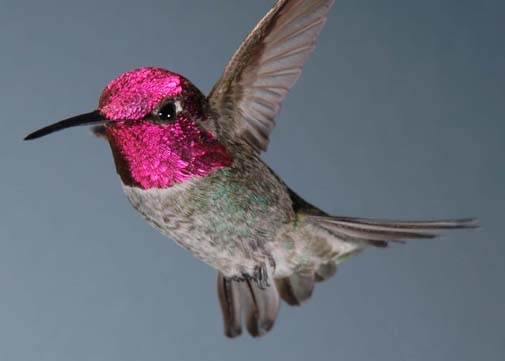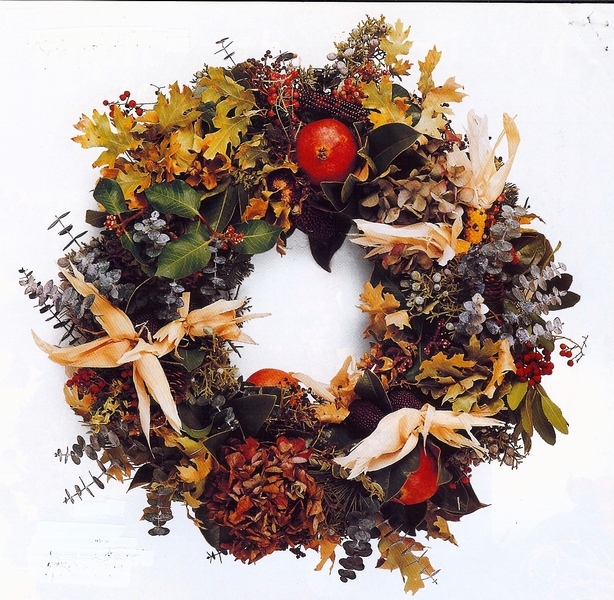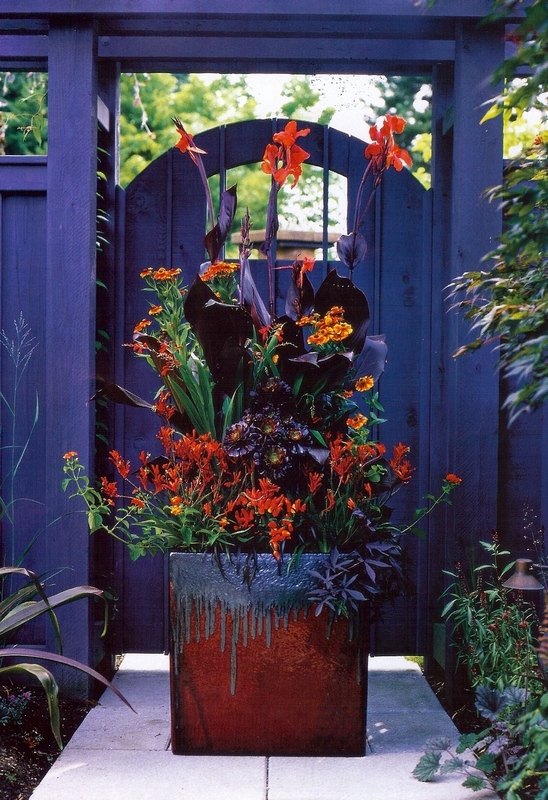Outside my window there’s a feast going on. The gingko trees are clothed in bright yellow leaves right now but soon they will drop every leaf on almost the same day and cover the ground like carpeting. It’s a feast for the eyes. Hopping among the branches even as I write this is a tiny greyish-olive bird with a white eye ring looking for insects. It’s either a kinglet or a vireo. I wish I were a better backyard birder. The Anna’s hummingbird is also here looking for food. What plants provide food for winter birds and also give the garden color at the same time?

Why not plant some containers that look great and will supply food for your winged visitors? Grevillea Canberra Gem is blooming now and is a hummingbird favorite. Combine it with winter blooming annuals like primroses or pansies and violas. It’s always amusing to me how much the mail order catalongs from the East Coast can command for a tiny primrose division and we here in California can find them plentiful and inexpensive.
Mahonia or Oregon grape will be blooming soon and their yellow flowers would look great with golden Iceland poppies. Many of their leaves are purplish or bronze now that the nights have gotten cold and are very colorful. Hummingbirds favor their flowers and many songbirds eat the delicious berries.
Penstemon are a favorite garden perennial and bloom late in the year attracting hummingbirds. Some are short-lived but the variety, Garnet, is an exception. Combine it with white cyclamen for a traditional holiday look.
For those really dark places, fragrant sarcococca is perfect combined with red primroses and will be blooming very soon. You can smell their perfume from a long distance. Hellebores bloom in the winter, too, and offer texture in your containers. A variegated osmanthus will hold up in even our harshest weather and would be a show stopper in a Chinese red container.
Dwarf nandina is perfect in winter containers, especially now that their foliage has taken on red and orange tints. Combine them with a grass like orange sedge or reddish bronze carex buchananii.
Mexican Bush sage pairs beautifully with the deep golden flowers of Mexican marigold. Both of these perennial shrubs grow to 3 ft tall and as wide and bloom in winter. Hummingbirds love bush sage and I’ve seen them bloom right through January unless we have a hard frost.
If you have room for a small evergreen tree in the garden, consider the . It is easy to grow and has year round interest. In the fall and winter, clusters of small white or pink urn-shaped flowers attract Anna’s hummingbirds. Fruit resembling strawberries ripen in the fall and attract other birds.
Plant a feast for your eyes and for our feathered friends, too.

 ing a little pruning done? While you’re in the decorating mood, take advantage of this opportunity to prune your evergreens to use in wreaths and swags. Cuttings from Douglas fir, redwoods, pine, holly, mahonia, make fine additions to your wreaths and swags. But don’t whack off snippets indiscriminately. To reveal the plant’s naturally handsome form, prune from the bottom up and from the inside out. Avoid ugly stubs by cutting back to the next largest branch or to the trunk. If the plant has grown too dense, selectively remove whole branches to allow more air and sunlight to reach into the plant. To force upward growth, cut the branch just beyond an upward facing shoot. To foster spreading growth, cut the branch just beyond a downward facing shoot.
ing a little pruning done? While you’re in the decorating mood, take advantage of this opportunity to prune your evergreens to use in wreaths and swags. Cuttings from Douglas fir, redwoods, pine, holly, mahonia, make fine additions to your wreaths and swags. But don’t whack off snippets indiscriminately. To reveal the plant’s naturally handsome form, prune from the bottom up and from the inside out. Avoid ugly stubs by cutting back to the next largest branch or to the trunk. If the plant has grown too dense, selectively remove whole branches to allow more air and sunlight to reach into the plant. To force upward growth, cut the branch just beyond an upward facing shoot. To foster spreading growth, cut the branch just beyond a downward facing shoot. 